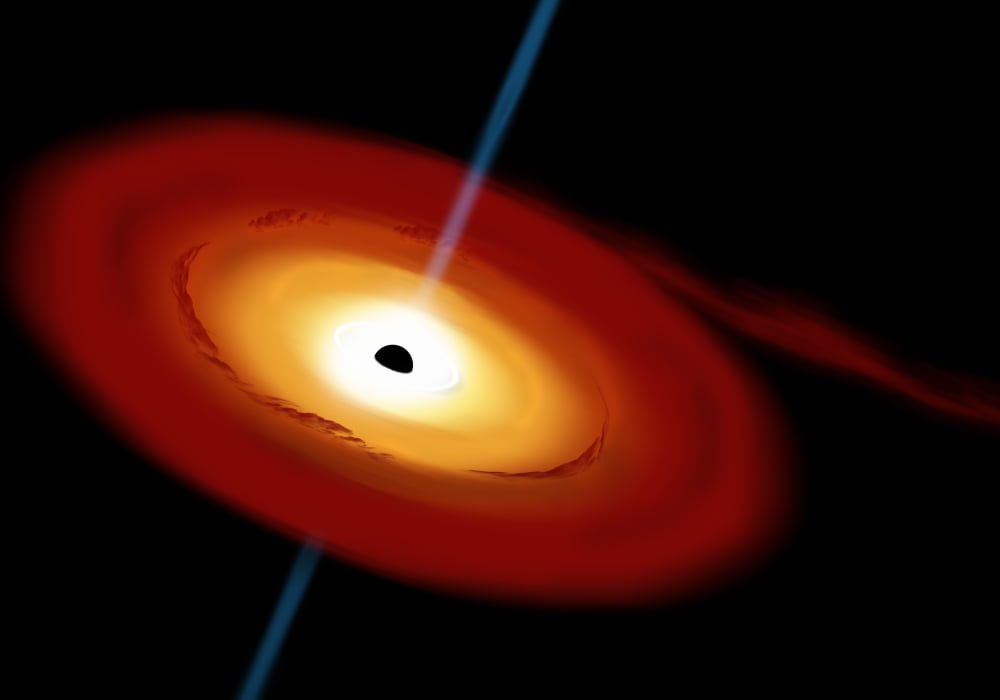

The two orbit with a distance between them of only 0.2 astronomical units (AU 1 AU = 93 million miles ), about half the distance that Mercury orbits from our Sun. It’s called a high-mass X-ray binary because the companion star (the supergiant) is massive and the black hole gives off X-rays. The system, which sits about 6,100 light-years away in the constellation Cygnus, contains a young blue supergiant star (HDE 226868) about 20 times the mass of our Sun, and a black hole about 15 times the mass of our Sun. By 1990, when the majority of the astronomical community had agreed the source of X-rays in Cyg X-1 was a black hole, Hawking conceded the bet (and subsequently, as per the conditions of the wager, bought Thorne a year’s subscription to Penthouse magazine).

Thorne bet that Cyg X-1 was indeed a black hole, while Hawking bet that it wasn’t. It is the first source that astronomers could agree was a black hole, and the subject of a well-known 1974 bet between Kip Thorne and Stephen Hawking. They’ve found that this particular black hole, at least, has an extended flat accretion disk with a spherical, extended cloud of heated gas in the center.Ĭygnus X-1 (also called Cyg X-1) is one of the most famous black holes in our galaxy. Now, in a recent paper published in Nature Astronomy, researchers from Japan and Sweden have determined which model is most likely.

The processes of accretion and jet formation give off X-rays we can detect here on Earth, but the question is, what exactly is going on?įormerly, astronomers had developed two possible geometrical models for what the area close to the black hole looked like. That black hole is both accreting matter - pulling gas off its companion and funneling it into a swirling disk - and shooting out powerful jets. Discovered in the early 1960s by rocket-borne X-ray detectors, Cygnus X-1 is a binary system containing a supergiant star and a stellar-mass black hole.


 0 kommentar(er)
0 kommentar(er)
